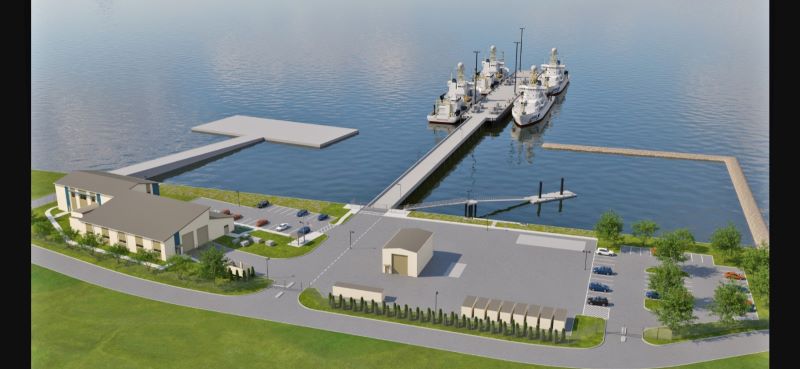After Working to Successfully Bring NOAA Hub to Newport, Reed to Join Raimondo & Top NOAA Officials and RI Leaders for Special Groundbreaking Ceremony at Naval Station Newport

NOAA Marine Operations Center – Atlantic expected to complete move from Norfolk, Virginia to Naval Station Newport by 2027 with a brand new $150 million shoreside facility as well as pier and floating dock
NEWPORT, RI – The National Oceanographic and Atmospheric Administration’s (NOAA) Marine Operations Center – Atlantic (MOC-A) is moving from Norfolk, Virginia to Naval Station (NAVSTA) Newport in Rhode Island.
The MOC-A coordinates NOAA’s ships operating in the Atlantic Ocean and Great Lakes and serves as a homeport for some of NOAA’s flagship research vessels. NOAA has long planned to consolidate its fleet and upgrade its facilities and U.S. Senator Jack Reed, a senior member of the Appropriations Committee and the Chairman of the Senate Armed Services Committee, successfully worked to ensure Rhode Island was best-positioned to be the homeport for the MOC-A and four major NOAA research vessels.
On Monday, May 6 at 11 a.m., Senator Reed will join U.S. Secretary of Commerce Gina Raimondo; the head of NOAA, Rick Spinrad, Ph.D.; NOAA Corps Rear Admiral Nancy Hann, director of NOAA Marine and Aviation Operations and the NOAA Commissioned Officer Corps; and other special guests for a groundbreaking ceremony on a 5 acre site at Naval Station Newport.
In December, the U.S. Navy, on behalf of NOAA, announced a $146,778,932 contract for Skanska USA to build the new facility, which will serve as the headquarters for NOAA’s Atlantic fleet. When it is completed the new facility will help support about 200 jobs, with many of them at sea for long stretches.
Currently, NOAA has two ships homeported at Naval Station Newport’s Pier 2 on Narragansett Bay: the 209-foot Henry B. Bigelow (R 225), which is a fisheries research vessel, and the 224-foot Okeanos Explorer (R 337), known as “America’s ship for ocean exploration,” which is dedicated to oceanographic research and conducts operations around the globe, including mapping the seafloor.
A third NOAA ship is slated to homeport at NASTA Newport: Thomas Jefferson (S 222) is a 208-foot long deep-water hydrographic survey ship that uses sonar to map the bottom of the seafloor and provides data that informs the management of fisheries, navigation safety, ice models, hydrodynamic models, and geological work.
Additionally, a fourth NOAA vessel that will be homeported in Newport is now under construction: the 244-foot Discoverer, which will be a state-of-the-art oceanographic research vessel, is currently being built in Louisiana. The ship’s sponsor is Second Gentleman Douglas C. Emhoff, and the ship is scheduled to join the fleet in 2026.
Overall, NOAA’s fleet currently includes fifteen oceanographic research vessels, fisheries survey vessels, and hydrographic survey vessels.
Funded in part by the Inflation Reduction Act, the new NOAA facility will include a pier that will accommodate four large vessels, a floating dock for smaller vessels, space for vessel repairs and parking and a building to be used for shoreside support and as a warehouse.